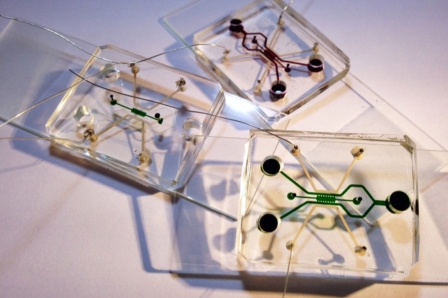Coin-sized device could lead to personalized cancer therapy
A form of cancer therapy that uses electric fields to stop malignant cells from spreading remains controversial, because it’s unclear how effective and safe it truly is. This coin-sized device developed by MIT’s research center in Singapore, however, could help scientists study its effects more closely. What’s more, it could eventually be used to personalize the treatment for each individual. Medical experts simply have to inject a mixture of hydrogels, healthy cells and different types of cancer cells taken directly from a patient into the device before subjecting it to electric fields at different frequencies. By doing so, they’ll be able to pinpoint the most effective electric field frequency to use to treat that particular patient.
“For personalized medicine, you can test if a recipe works for a specific person” says team member Giulia Adriani. “In three days, you can have an answer. And for many cancer patients who are dying of metastasis, time is everything.” That device is young, however, and it’ll most likely take a while before it’s used to personalize treatments for cancer patients.
The therapy is based on scientists’ findings that electric fields (at the right frequency) attack only the molecules that cause cancer cells to divide rapidly and grow into tumors. As team member Andrea Pavesi explained, “By tweaking the intensity and frequency, you can have an effect only on the cancer cells, leaving the other type of cells unaltered, without destroying them. That’s the key concept.”
The team proved that during their tests using the microfluidic device: the cancer cell samples they left untouched began to spread within a couple of days. However, the samples they subjected to three days of electric field stimulation didn’t spread, and the healthy cells weren’t affected. While personalized medicine is ultimate goal, the researchers believe their creation could help other scientists speed up the process of going from lab to animal and human testing. They can use the device to test thousands of variables — electric fields at various intensities and frequencies on different cancer cell types — after all. When they narrow it down to a smaller number, they can then move on to in vivo testing.
(20)



